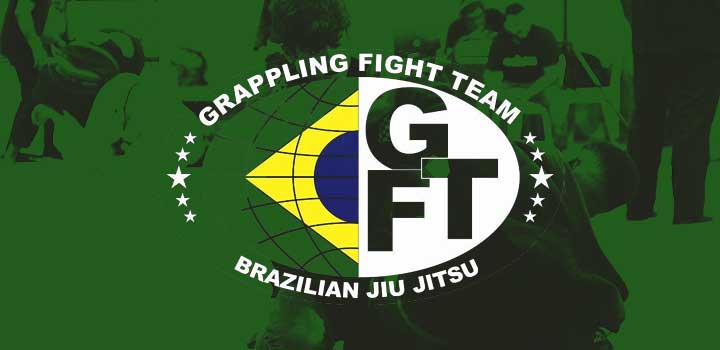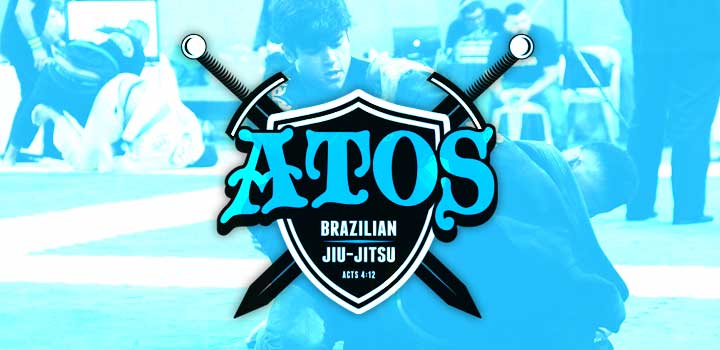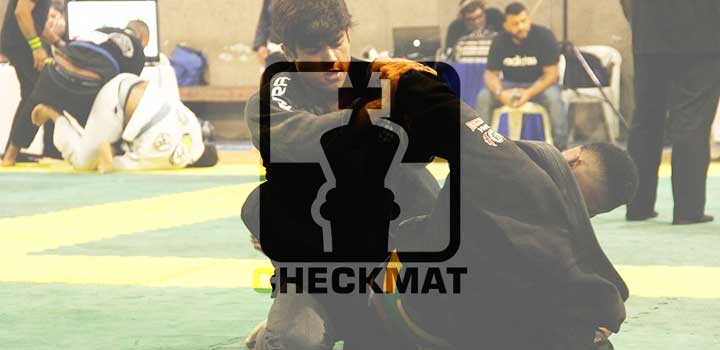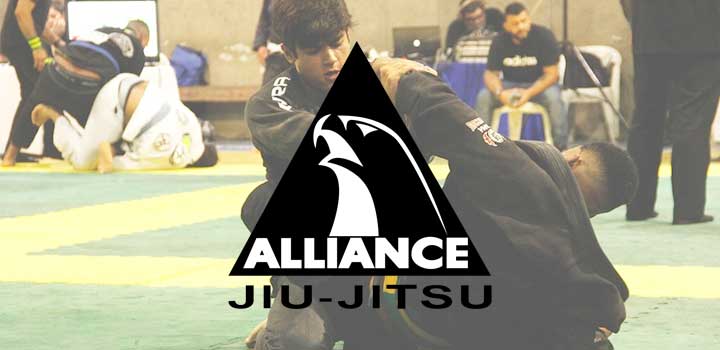We are guilty of often placing too much focus on the black belt division, yet, it is at the brown belt level that we start deciphering who the future legends of our sport will be. It is also in the brown belt divisions that we see which teams will be most successful in the next decade – granted, only if they manage to maintain their talent in house.
Although ever-changing, our sport’s structure continues heavily reliant on group-work type relationships that focus on flag representation. This idiosyncrasy of BJJ in martial arts is what we will focus on today. Teams and their projects, who have been working hard to produce the future of the sport, workgroups that are now bearing fruit in the brown belt divisions, and are expected to dominate jiu-jitsu in the foreseeable future.
TOP 5 BROWN BELT TEAMS
 The famous Meyer, Rio de Janeiro based team has gone through its ups and downs over the past decade. After being launched into global recognition through the rise of Rodolfo Vieira, Jaime Canuto, Gutemberg Pereira, Vitor Honório, Max Gimenis, and more, the academy went through some restructuring. Rodolfo transitioned to MMA, many of the team’s top athletes moved to the USA and even the gym’s founder, Julio César, left his Rio home for the Promised Land.
The famous Meyer, Rio de Janeiro based team has gone through its ups and downs over the past decade. After being launched into global recognition through the rise of Rodolfo Vieira, Jaime Canuto, Gutemberg Pereira, Vitor Honório, Max Gimenis, and more, the academy went through some restructuring. Rodolfo transitioned to MMA, many of the team’s top athletes moved to the USA and even the gym’s founder, Julio César, left his Rio home for the Promised Land.
All these changes were felt during a period of time, yet, the GFT has been gaining a lot of momentum in the Brazilian national circuit. That work is now being felt at the brown belt level, on an international scale through powerhouses such as Pedro “Bombom” and Davi Cabral.
Much of this rebirth of the team is owed to the team’s solid foundation of coaches in men such as Gabriel Marinho, Vinicius Pedrosa, and Gutemberg Pereira.
Key GFT Brown Belts
– Davi Cabral
– Rony Fialho
– Pedro Alex “Bom-Bom”
– João Vitor Oliveira
– Iago Santos
– Marcos Carrozzino
 Widely regarded as one of the top 3 teams in the world, Atos relied on a strong coalition between the workgroups of the team’s headquarters in San Diego and those of the Art Of Jiu-Jitsu academy in Costa Mesa, also in California. This merger had the blue shield challenging for the world team title for the past few years, earning two of those. More recently this famous merger came to a halt, with AOJ separating from Atos, a severance that greatly diminished the team’s firepower.
Widely regarded as one of the top 3 teams in the world, Atos relied on a strong coalition between the workgroups of the team’s headquarters in San Diego and those of the Art Of Jiu-Jitsu academy in Costa Mesa, also in California. This merger had the blue shield challenging for the world team title for the past few years, earning two of those. More recently this famous merger came to a halt, with AOJ separating from Atos, a severance that greatly diminished the team’s firepower.
More recently it was the move of the team’s most accomplished purple belt, DC DeAngelis that furthered the dent already felt in the team’s colored belt squad. Luckily, there is no shortage of talent in André Galvão’s platoon of grapplers, and the brown belt team is no exception.
The list of Atos brown belt representatives currently stands with Andy Murasaki as its most important figure, but he is not alone. Talent such as Heather Morgan, Javier Zaruski, and Adam Bradley are equally accomplished in the San Diego squad, with the team’s Guetho affiliate, in Porto Alegre, being another frequent provider of top tier athletes, the most recent of which being brown belt Iago Martins. Most importantly, the Almeida Jiu-Jitsu connection in São Paulo, is another big player for the Atos global stake in the sport, being a big team on their own, home to Bianca Basílio, Leo Lara, Cleber Clandestino and more.
Key Atos Brown Belts
– Andy Murasaki
– Raul Basilio
– Iago Carvalho
– Javier Zaruski
– Adam Bradley
– Heather Morgan
– Rafaela Guedes
 Up until recent times, much of the on-going stream of colored belt talent in Checkmat was heavily reliant on the team’s co-founder Ricardo Vieira, and his Rio de Janeiro based gym, which delivered an array of pro-athletes such as Alan Finfou, Jackson Sousa, Thiago Sá, Gabriel Almeida, Gabriela Fechter, Jonata Gomes, Natan Chueng, etc. Although this gym is still bearing fruit in purple belt Dudu Granzotto Lima or brown belt super-star Jansen Gomes, Checkmat’s branches are now stronger than they were in the past.
Up until recent times, much of the on-going stream of colored belt talent in Checkmat was heavily reliant on the team’s co-founder Ricardo Vieira, and his Rio de Janeiro based gym, which delivered an array of pro-athletes such as Alan Finfou, Jackson Sousa, Thiago Sá, Gabriel Almeida, Gabriela Fechter, Jonata Gomes, Natan Chueng, etc. Although this gym is still bearing fruit in purple belt Dudu Granzotto Lima or brown belt super-star Jansen Gomes, Checkmat’s branches are now stronger than they were in the past.
The top talent producers as of late have been coach Lucas Leite (CKM La Habra), Keiser Girão (Dallas) as well as Leo Vieira in the team’s California headquarters. Other fruitful Checkmat hubs are the European affiliates – Fight Zone London (ENG) led by Marco Canha, and Alan Finfou’s Stockholm (SWE) team.
Although ranked at the very top of the brown belt level early this year, Checkmat’s most prominent brown belts have recently been promoted to black belt. Names such as Mayara Custódio, Jonata “Bê”, Elina Moestam or Jackson, and Samuel Nagai, therefore, the structure has somewhat changed. One of the good things about having a more varied source of talent is that there are always more coming through. Leading this Checkmat brown belt army today are names such as the aforementioned Jansen Gomes, Lucas Protassio, Paulo Lanzillotti, and Marcelo Fausto.
Key Checkmat Brown Belts
– Jansen Gomes
– Guilherme Bacha
– Lucas Protassio
– Paulo Lanzillotti,
– Marcelo Fausto
 Another team that is making the most of having several hubs of talented coaches providing top tier talent is Alliance. For years the Sao Paulo “Matriz” academy was one of the sole providers of world-class talent in the Alliance squad, the team went through a nearly decade long transformation period to come back as history’s most successful team jiu-jitsu.
Another team that is making the most of having several hubs of talented coaches providing top tier talent is Alliance. For years the Sao Paulo “Matriz” academy was one of the sole providers of world-class talent in the Alliance squad, the team went through a nearly decade long transformation period to come back as history’s most successful team jiu-jitsu.
The space carved by Fábio Gurgel in São Paulo soon spread to the USA with Master Jacaré in Atlanta, Mário Reis in Porto Alegre, Marcelo Garcia in New York, going on to California with Cobrinha, Bernardo Faria in Massachusetts or Lucas Lepri in North Carolina.
In what seems like a case of exponential growth, Alliance has managed to grow even further in their line of talent production as of late, through their Dream Art project. A combination of athletes led by Isaque Bahiense who currently have, arguably, the most successful workgroup of brown belts in the world with the Munis brothers, Lucas “Simba”, Fabricio Andrey, and more.
With this level of talent, unless there is a split between a few of these flagship gyms and the team, Alliance is set for another 10 years of dominance in the gi facet of jiu-jitsu.
Key Alliance Brown Belts
– Fabricio Andrey
– Erich Munis
– Anderson Munis
– Carlos Jourdan Nogueira
– Vinicius Martins
– Giancarlo Bodoni
– Lucas Gualberto “Simba”
– Nick Salles (MGA)
 Very similar to the Alliance approach these days is Gracie Barra, in terms of their range of affiliates, yet, in the past, The Red Shield had been more reliant on cycles. We will explain: Team GB’s first wave of talent came from the Rio de Janeiro HQ, a few years later, although not exclusively, it was the time for the Belo Horizonte affiliate to shine and bring out its own big wave of championship material in Rômulo Barral, Marcelo Uirapuru, Cristiano Titi, Pablo Silva, Samuel Braga, etc.
Very similar to the Alliance approach these days is Gracie Barra, in terms of their range of affiliates, yet, in the past, The Red Shield had been more reliant on cycles. We will explain: Team GB’s first wave of talent came from the Rio de Janeiro HQ, a few years later, although not exclusively, it was the time for the Belo Horizonte affiliate to shine and bring out its own big wave of championship material in Rômulo Barral, Marcelo Uirapuru, Cristiano Titi, Pablo Silva, Samuel Braga, etc.
More recently it was Barral and his Northridge team affiliate who came out with Felipe Preguiça, Gabe Arges, Edwin Najmi, or Sérvio Túlio. More recently the Gracie Barra machine has been gaining from all its affiliates, from Texas to Belo Horizonte, from Northridge to Petrópolis. This new strength of the famous Gracie franchise will likely see a strong comeback from the team at a world stage.
Key GB Brown Belts
– Joao Felipe Cizeski
– Leo Lemos
– Guilherme Lambertucci
– Pedro Marinho
– Thomas Bracher
– Gabriel Machado
– Connor Donaldson
– Kaique Kappler
– Zane Spruce
















On the article about the up & coming brown belts I just want to point out that Javier Zaruski is a purple belt, not a brown belt.